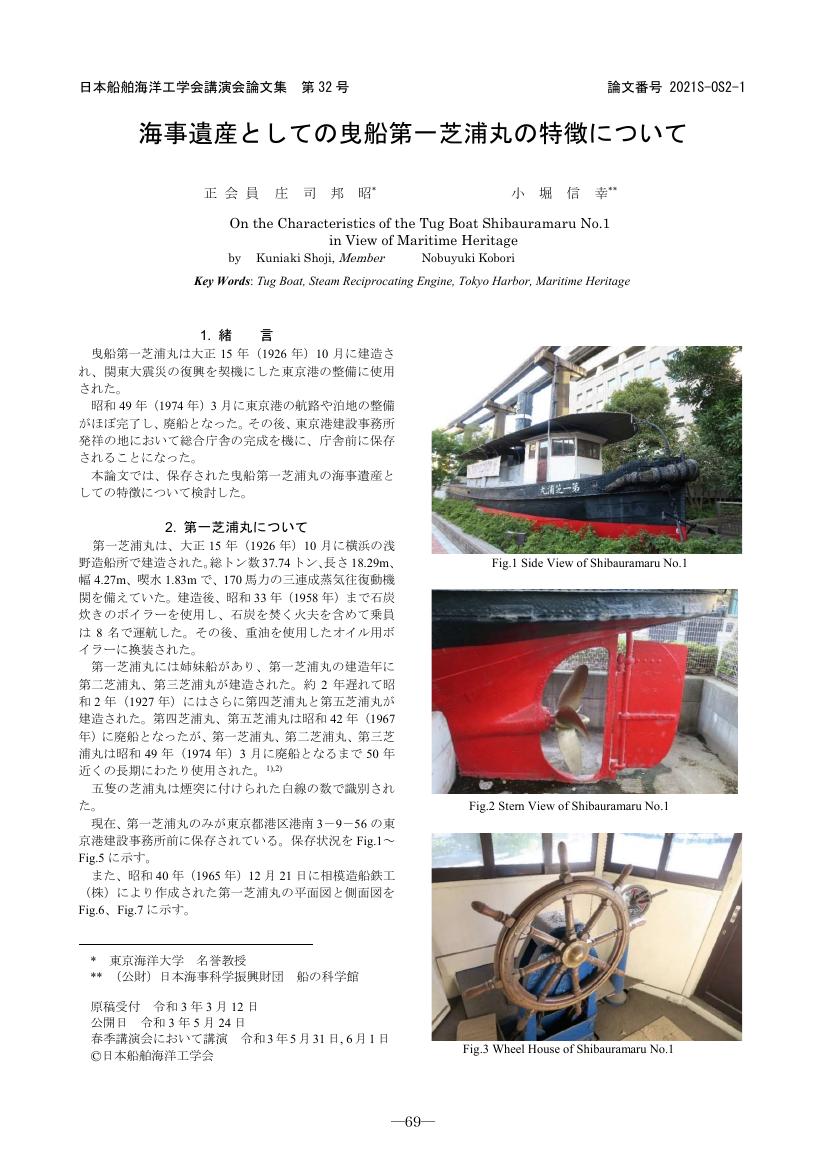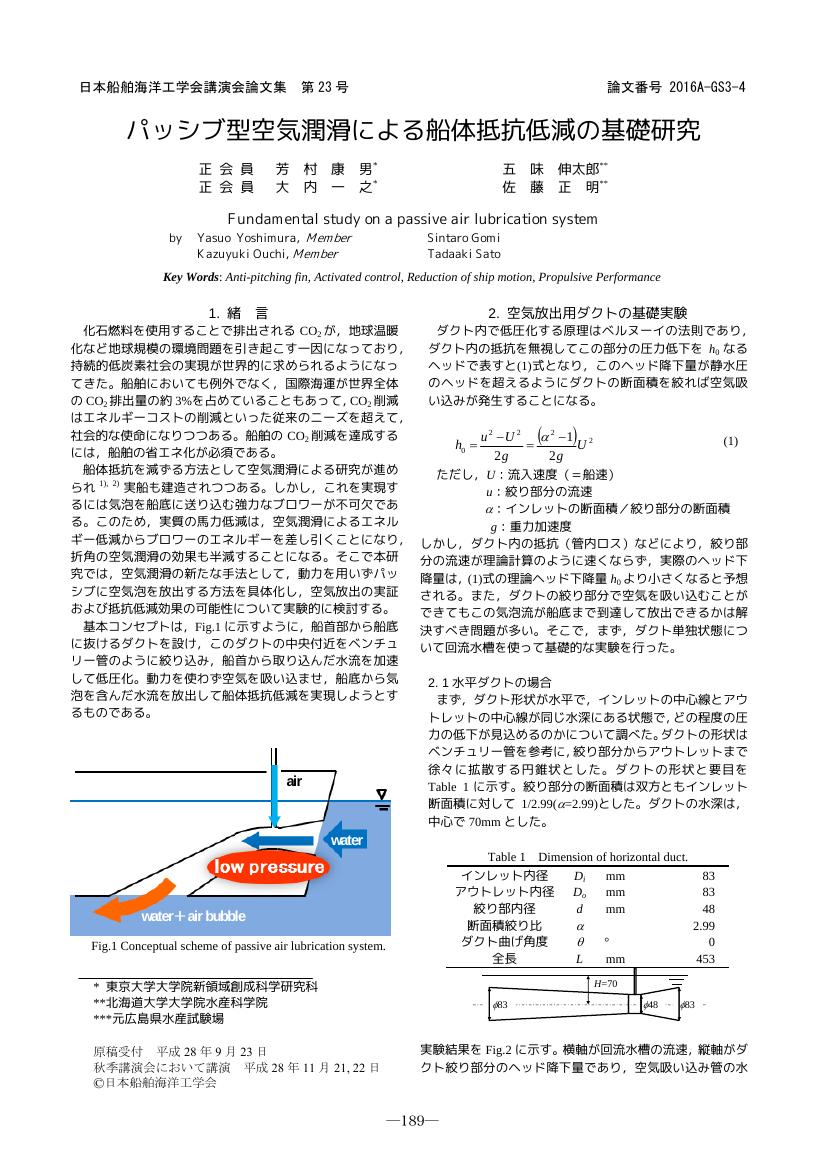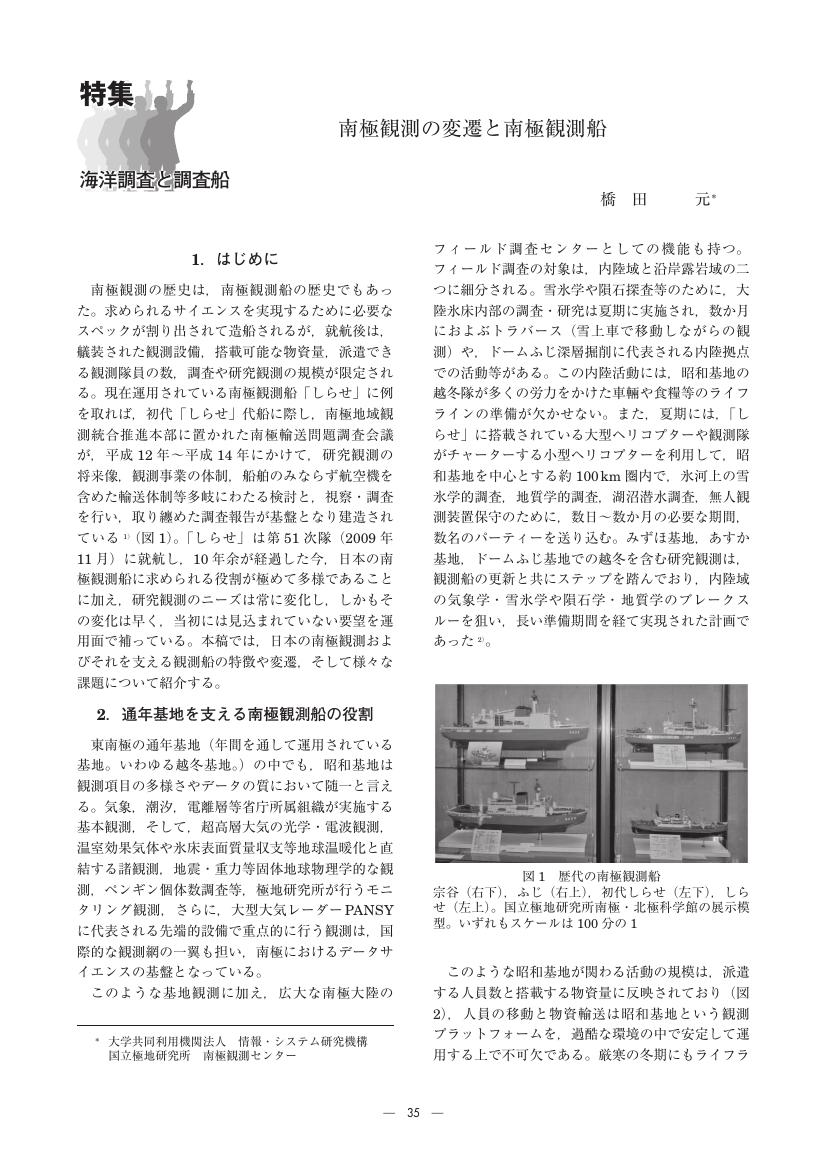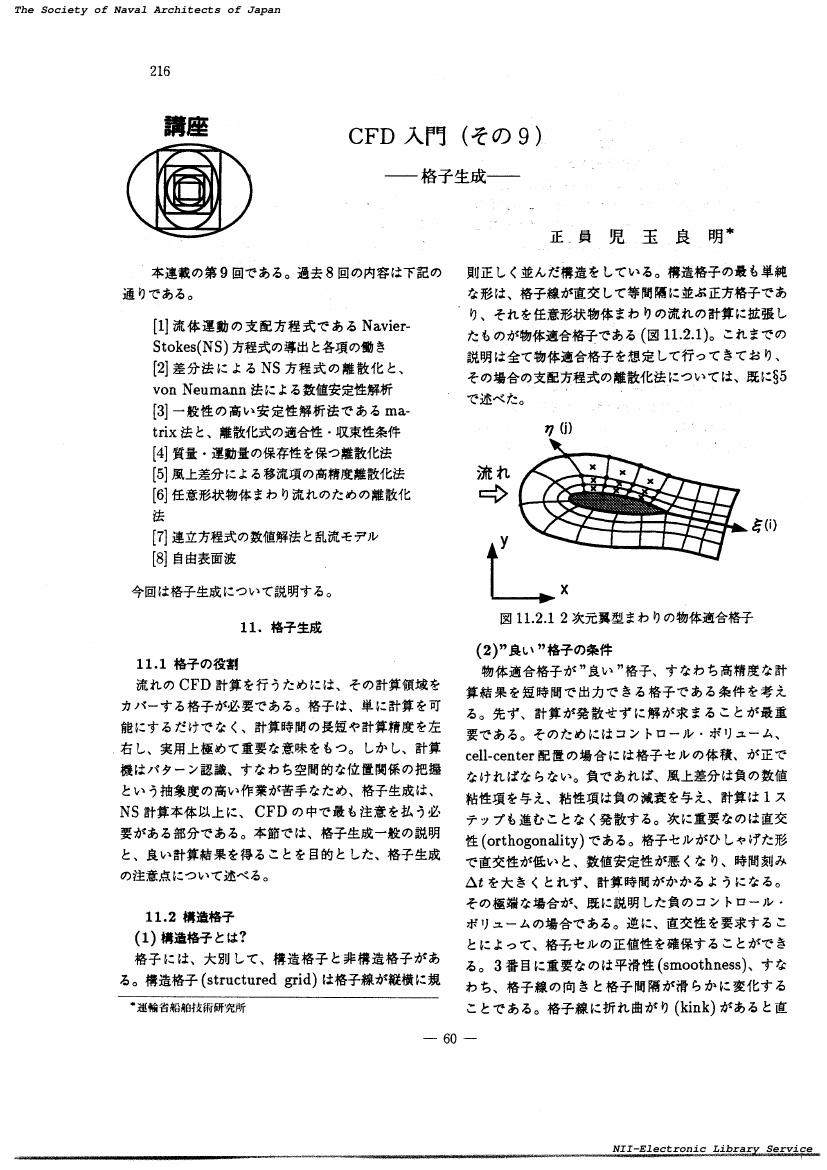1 0 0 0 OA 『艦隊これくしょん –艦これ–』 / 『大航海時代』
- 著者
- H. S. A. I.
- 出版者
- 公益社団法人 日本船舶海洋工学会
- 雑誌
- 日本船舶海洋工学会誌 KANRIN(咸臨) (ISSN:18803725)
- 巻号頁・発行日
- vol.91, pp.48, 2020-07-10 (Released:2023-02-14)
- 著者
- 瀬川 教文 梅田 直哉
- 出版者
- 公益社団法人 日本船舶海洋工学会
- 雑誌
- 日本船舶海洋工学会講演会論文集 33 (ISSN:24241628)
- 巻号頁・発行日
- pp.191-192, 2021-11-29 (Released:2023-05-24)
1 0 0 0 OA Estimation Method for Dragged Anchor Accident Frequency on Subsea Pipelines in Busy Port Areas
- 著者
- Yeyes Mulyadi Eiichi Kobayashi Nobukazu Wakabayashi Trika Pitana Wahyudi Eko Prasetyo
- 出版者
- 公益社団法人 日本船舶海洋工学会
- 雑誌
- 日本船舶海洋工学会論文集 (ISSN:18803717)
- 巻号頁・発行日
- vol.20, pp.173-183, 2014 (Released:2015-02-26)
- 参考文献数
- 27
- 被引用文献数
- 2
Recently, many subsea pipelines have been developed in busy port areas, including industrial ports, recreational areas, fishing areas, and other port facilities. Under busy ship traffic conditions, these subsea pipelines are likely to be exposed to the risk of damage by a dragged anchor or other dropped objects. In this paper, a model is proposed to estimate the dragged anchor accident frequency on subsea pipelines based on the concept introduced by Fujii. The proposed model is approached by estimating the number of dragged anchor candidates on subsea pipelines, Na, based on an analysis of the anchor stopping distance in a critical subsea pipeline area. The causation probability Pc is estimated using a Bayesian network method that is modified from the model of Det Norske Veritas (DNV) and Hanninen. Various factors are considered to estimate Pc, including the human factor, weather factor,technical factor, and support factor. Automatic Identification System (AIS) and Geographic Information System (GIS) data are combined to estimate the lateral probability distribution of the ship traffic around a subsea pipeline area. A case study of anchors dragging on the subsea pipeline in the Madura Strait of Indonesia is performed to demonstrate the implementation of the proposed model. The proposed model is validated by comparing the results for the estimated dragged anchor accident frequency on the subsea pipeline using the proposed model with the actual accidents recorded in the Madura Strait. The results of this validation analysis show that there is reasonable agreement.
1 0 0 0 OA 船の進化論 (<特集>造船技術の変遷)
- 著者
- 塩田 浩平
- 出版者
- 公益社団法人 日本船舶海洋工学会
- 雑誌
- 日本船舶海洋工学会講演会論文集 7E (ISSN:24241628)
- 巻号頁・発行日
- pp.93-96, 2008 (Released:2017-11-30)
1 0 0 0 OA 5.高速船の運航について(<特集>高速船の動向)
- 著者
- 石崎 嗣夫
- 出版者
- 公益社団法人 日本船舶海洋工学会
- 雑誌
- らん:纜 (ISSN:09160981)
- 巻号頁・発行日
- vol.64, pp.23-25, 2004-06-30 (Released:2018-03-01)
1 0 0 0 OA 初期計画時の船殻重量の推定
- 著者
- 根田 正衛
- 出版者
- 公益社団法人 日本船舶海洋工学会
- 雑誌
- 造船協会誌 (ISSN:03861503)
- 巻号頁・発行日
- vol.387, pp.540-542, 1961-12-25 (Released:2018-03-01)
1 0 0 0 OA フォイト・シュナイダー推進器附曳船
- 著者
- 山本 熈
- 出版者
- 公益社団法人 日本船舶海洋工学会
- 雑誌
- 造船協会雑纂 (ISSN:24331023)
- 巻号頁・発行日
- vol.175, pp.633-635, 1936 (Released:2018-03-01)
1 0 0 0 OA 2021S-OS2-1 海事遺産としての曳船第一芝浦丸の特徴について
- 著者
- 庄司 邦昭 小堀 信幸
- 出版者
- 公益社団法人 日本船舶海洋工学会
- 雑誌
- 日本船舶海洋工学会講演会論文集 32 (ISSN:24241628)
- 巻号頁・発行日
- pp.69-72, 2021-05-31 (Released:2023-04-26)
1 0 0 0 OA 日本刀に就て(一)
- 著者
- 齋藤 貞一
- 出版者
- 公益社団法人 日本船舶海洋工学会
- 雑誌
- 関西造船協会会誌 (ISSN:24331058)
- 巻号頁・発行日
- vol.18, pp.47-54, 1919-04-05 (Released:2018-02-24)
1 0 0 0 OA 船台進水の運動シミュレーション
- 著者
- 安川 宏紀 平田 法隆 浮田 寛之
- 出版者
- 公益社団法人 日本船舶海洋工学会
- 雑誌
- 日本船舶海洋工学会論文集 (ISSN:18803717)
- 巻号頁・発行日
- vol.17, pp.49-56, 2013 (Released:2014-01-17)
- 参考文献数
- 9
This paper presents a practical simulation model for ship launching taking the dynamic coupling effect of trim angle change and vertical motion into account. The motion equations were derived in three stages of sliding, lift by stern and afloat modes in launching. By solving the motion equations in three stages continuously, ship speed change, trim angle change, traveling distance, pivoting load, etc. during launching can be calculated. To obtain the validation data of the simulation method, a fullscale test was carried out to measure the ship motions during launching by a Kinematic GPS (KGPS) system. Then, three antennas for KGPS were arranged on a Chip Carrier with 191.5 m in ship length. Some parameters needed for the simulation were determined by comparing with the fullscale test result. The present simulation method is useful for capturing th ship launching behavior.
1 0 0 0 OA 2016A-GS3-4 パッシブ型空気潤滑による船体抵抗低減の基礎研究
- 著者
- 芳村 康男 五味 伸太郎 大内 一之 佐藤 正明
- 出版者
- 公益社団法人 日本船舶海洋工学会
- 雑誌
- 日本船舶海洋工学会講演会論文集 23 (ISSN:24241628)
- 巻号頁・発行日
- pp.189-192, 2016-11-21 (Released:2022-11-10)
1 0 0 0 OA 4.船舶用塗料の遍歴と最新の塗料(<特集>コーティング)
- 著者
- 植田 彰裕
- 出版者
- 公益社団法人 日本船舶海洋工学会
- 雑誌
- らん:纜 (ISSN:09160981)
- 巻号頁・発行日
- vol.46, pp.19-25, 1999-12-30 (Released:2018-02-25)
1 0 0 0 OA 船舶美学への一提言
- 著者
- 竹鼻 三雄
- 出版者
- 公益社団法人 日本船舶海洋工学会
- 雑誌
- 日本造船学会誌 (ISSN:03861597)
- 巻号頁・発行日
- vol.669, pp.137, 1985-03-25 (Released:2018-03-30)
1 0 0 0 OA フランス海軍士官が函館で計測した弁才船の図面
- 著者
- 小嶋 良一
- 出版者
- 公益社団法人 日本船舶海洋工学会
- 雑誌
- 日本船舶海洋工学会誌 KANRIN(咸臨) (ISSN:18803725)
- 巻号頁・発行日
- vol.107, pp.ii, 2023-03-10 (Released:2023-09-20)
- 参考文献数
- 2
1 0 0 0 OA 2.2 我が国におけるブロック建造法について(<特集>技術高度化志向と日本造船)
- 著者
- 川瀬 晃
- 出版者
- 公益社団法人 日本船舶海洋工学会
- 雑誌
- Techno marine 日本造船学会誌 (ISSN:09168699)
- 巻号頁・発行日
- vol.885, pp.336-340, 2005-05-10 (Released:2018-03-28)
- 参考文献数
- 18
1 0 0 0 OA 超電導電磁推進船の開発研究計画について
- 著者
- 竹澤 節雄
- 出版者
- 公益社団法人 日本船舶海洋工学会
- 雑誌
- 日本造船学会誌 (ISSN:03861597)
- 巻号頁・発行日
- vol.709, pp.435-446, 1988-07-25 (Released:2018-04-05)
1 0 0 0 OA 南極観測の変遷と南極観測船
- 著者
- 橋田 元
- 出版者
- 公益社団法人 日本船舶海洋工学会
- 雑誌
- 日本船舶海洋工学会誌 KANRIN(咸臨) (ISSN:18803725)
- 巻号頁・発行日
- vol.101, pp.35-38, 2022-03-10 (Released:2023-04-05)
- 参考文献数
- 11
1 0 0 0 OA 格子生成(<講座>CDF入門(その9))
- 著者
- 児玉 良明
- 出版者
- 公益社団法人 日本船舶海洋工学会
- 雑誌
- Techno marine 日本造船学会誌 (ISSN:09168699)
- 巻号頁・発行日
- vol.813, pp.216-221, 1997 (Released:2018-03-01)
1 0 0 0 OA 墨田川造船株式会社
- 著者
- 吉岡 久輝
- 出版者
- 公益社団法人 日本船舶海洋工学会
- 雑誌
- 日本船舶海洋工学会誌 KANRIN(咸臨) (ISSN:18803725)
- 巻号頁・発行日
- vol.70, pp.46-49, 2017-01-10 (Released:2022-10-28)
















